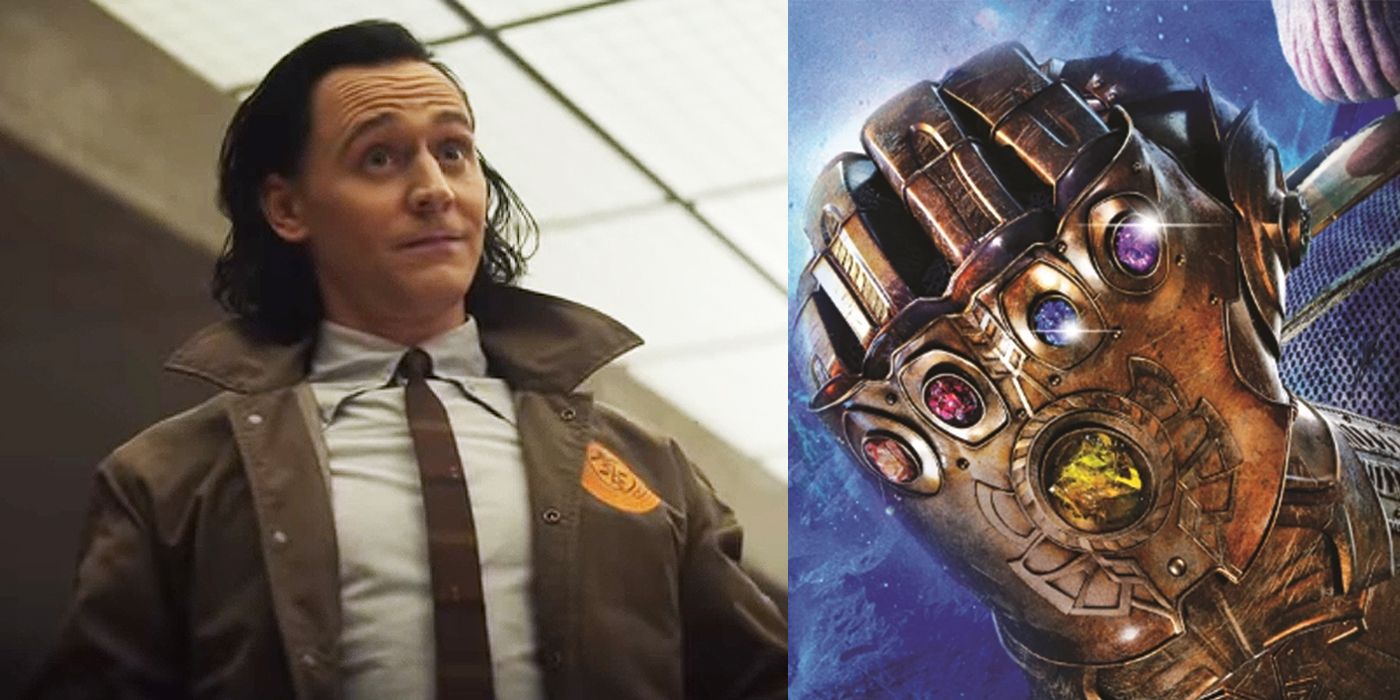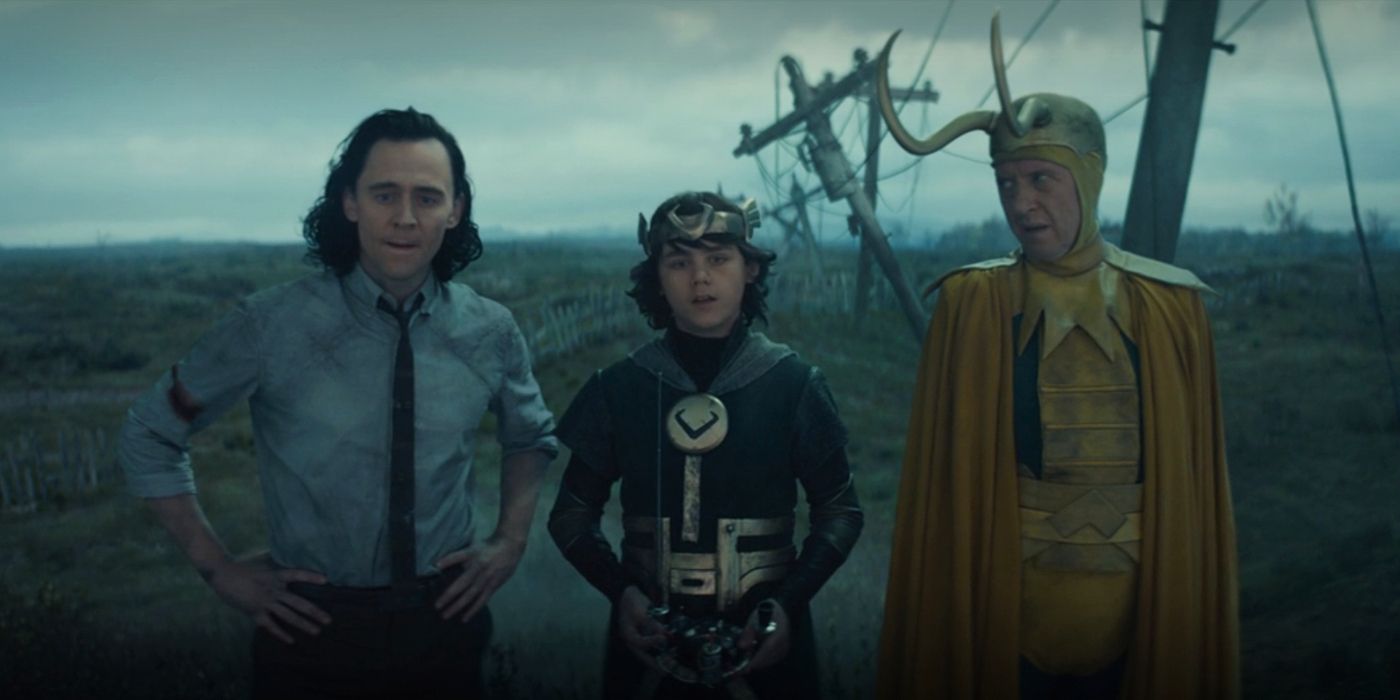
Since its June debut on Disney+, Loki has taken the MCU (and its fans) by storm. Despite his gruesome death in Infinity War, Loki was not lost for long. The botched Avengers time heist in Endgame led another Loki to vanish with the tesseract. Like any MCU project, the announcement of a Loki series led fans to speculate what they may be able to expect from the God of Mischief.
With five episodes already streaming on Disney+, Loki has continued to surprise fans with all its twists and turns. Many have become desperate to connect the dots to future Marvel projects, specifically the upcoming Doctor Strange sequel. A TikTok user has offered a surprising theory that may have cracked a crucial tactic used by the creators of Loki and how it may fit into the future of the MCU.
RELATED: Why the Infinity Stones In Loki Are Actually A Big Deal
The TikTok theory proposes that each episode of Loki is based on one of the six infinity stones. There are six episodes of Loki and six infinity stones: time, space, mind, reality, power, and soul. This creates a numerical link that begins to give the theory reasonable grounds without further analysis.

The theory proposes that the first episode, "Glorious Purpose," is based on the soul stone. Typically, souls are considered the link between the physical and spiritual self, focusing on emotions and feelings (which aren't typically associated with Loki). MCU fans know the soul stone is orange and from Loki's arrival in the TVA, fans are blinded by the color. The wording on Loki's variant uniform is orange, the walls around him are orange and the lighting in many of the scenes are washed with an orange hue.
Additionally, as proposed on Tik Tok, "Glorious Purpose" shows a more emotional Loki. He is no longer painted as an unemotional villain who only aims to cause mischief. Instead, Loki gets emotional about his family (especially his mother), suggesting that Loki is not as evil as everyone has made him out to be. In fact, at an earlier moment of the episode, Loki passes through a detector to determine whether or not he is a robot. Despite his own self-doubt, it determines that Loki is not a machine and is in fact a human, capable of experiencing ordinary emotion.
The second episode, "Variant" is believed to resonate with the reality stone. This episode features the color red, the same color as the reality stone. This is most notably seen in the superstore during Sylvie's introductory scene. In "Variant," Loki is now aware of the TVA and its desire to keep everyone on their desired timeline. It forces Loki to question his own conception of reality as he grapples with what is real and what isn't.

"Lamentis," Loki's third episode, involves a lot of purple imagery, suggesting a connection to the power stone. Power has a connotation of strength in many forms. With this episode, there is a bit to unpack. On the surface, as Lokis, both Sylvie and Loki have powers that are highlighted and explored in this episode more than those prior.
Memorably, "Lamentis" also confirmed many fan theories that Loki is a bisexual character. For members of the LGBTQ+ community, there is a level of power that is experienced upon sharing their identity with the world and those around them. For the MCU, the acknowledgment of Loki in this regard is incredibly powerful for LGBTQ+ representation. The use of blue, pink and of course purple in this episode, is also a reference to the bisexual flag.
There is a subtle link in the use of the power stone as well. If the power stone is being used as the stone for Loki's third episode, it draws on an earlier use of the stone. In Infinity War, Thanos used the power stone to hurl moons at the heroes that gathered on Titan to stop him. In "Lamentis," Loki and Sylvie find themselves trapped on Lamentis-1, a moon that is only a few hours away from a planet collision that would kill them. While the transported time of 2077 does not put Loki and Sylvie at the same time as Thanos in Infinity War (unless they've crossed paths with a Thanos variant), it is a subtle link through the potential use of the power stone.
Loki's fourth episode, "The Nexus Event," is coated in yellow and gold. The yellow infinity stone is the mind stone, which was largely explored in WandaVision. It has been known for its attachment to Vision and as shown in the sitcom-inspired series, it is responsible for amplifying Wanda's powers. Prior to this, the mind stone was utilized by Loki within his scepter in The Avengers.

The mind stone is one of the more explored infinity stones within the MCU. As the name suggests, it alters the mind in a variety of ways. In "The Nexus Event," Loki informs Mobius of what he's learned from Sylvie, which is that the TVA employees are all variants. Mobius does not believe him at first but does eventually come to terms with what Loki has told him, thus changing Mobius' mind. Similarly, Sylvie shares a moment with Hunter B-15, who believes Sylvie's confession about the TVA. Therefore, making another mind that's been changed.
That leaves episodes 5 and 6 without infinity stones. The fifth episode, "Journey Into Mystery," appears to deal with the space stone. After being pruned in "The Nexus Event," Loki wakes in a memorable post-credit scene to find four other Loki variants staring back at him. In the background is what appears to be a destroyed New York City, the location of Loki's battle in The Avengers. The scene has a blue tint to it, reflecting the color of the space stone.
"Journey Into Mystery" also features the color green with the many Lokis using their powers, but it doesn't correspond with time. The space stone remains the relevant stone to apply to this episode because, on a literal level, of the transportation through space during the pruning. But, the destroyed New York setting is also crucial in linking this episode to the space stone. In The Avengers, Loki attempted to conquer Earth by using the tesseract, the vessel of the space stone. With the destroyed New York backdrop, it quite literally makes the tesseract and thus, the space stone, the focal infinity stone for this episode.

This leaves the sixth and final episode of Loki and the time stone to be explored. Loki has been largely focused on time and finding out who is in charge of the sacred timeline. The time stone is known for its relationship to Doctor Strange and with the upcoming Doctor Strange in the Multiverse of Madness, it is likely that the Loki finale will end much like WandaVision with some potential context for the Doctor Strange sequel.
While Marvel hasn't given any validity to the theory, there are certainly grounds that point to the theory being plausible. Even if Marvel did not intend for there to be noteworthy connections to a specific infinity stone in each episode of Loki (which seems unlikely for Marvel), there is no denying that those connections exist.
MORE: Loki: 8 Things You'll Know About The God Of Mischief If You Read Norse Mythology

